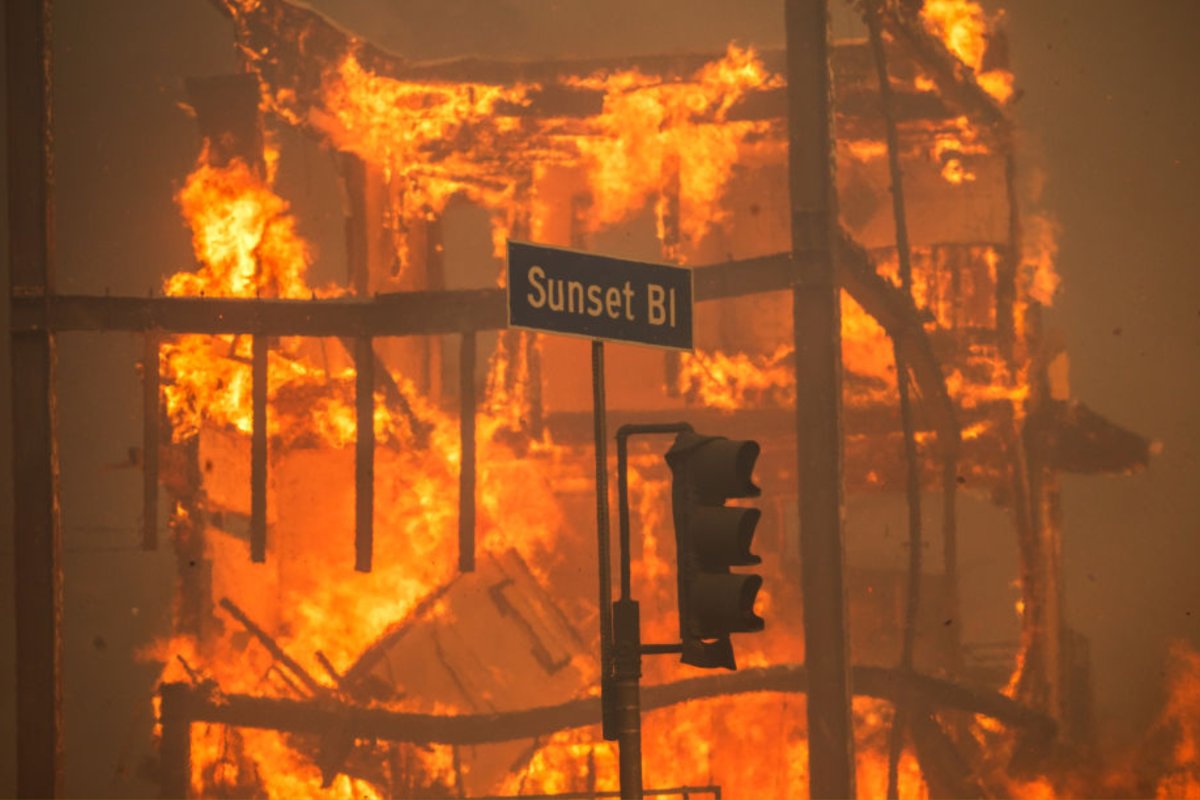Piloting Super Scoopers: What it takes to pilot firefighting aircraft
Amid the inferno sweeping through Los Angeles, the amphibious CL-415 “Super Scooper” has proven essential in fighting California’s wildfires. The aircraft, capable of skimming 1,600 gallons of water from the ocean and dropping it over fires, has become a critical resource in combating the flames.
Yet piloting these aircraft during emergencies is a major challenge, requiring exceptional skill, training, and adaptability. Thick smoke reduces visibility, and the fire’s heat generates turbulence, creating dangerous conditions that only a few experienced pilots can handle.
Why It Matters
Fires raging across the Los Angeles area have claimed at least 24 lives, displaced thousands, and destroyed more than 12,000 structures, potentially making them the costliest wildfires in United States history.
The blazes, which ignited last Tuesday, were driven by powerful Santa Ana winds that forecasters predict will persist through at least midweek. According to CAL FIRE, the Palisades, Eaton, Kenneth, and Hurst fires have scorched approximately 62 square miles.
Investigators are still working to determine the cause of the fires. While government agencies have yet to release preliminary damage estimates, AccuWeather, which analyzes weather impacts, projects the damage and economic losses to be between $250 billion and $275 billion.
Photo by David McNew/Getty Images
What To Know
California has long relied on international partnerships to supplement its firefighting fleet. The Super Scoopers currently in use are on loan from Quebec, which has provided aircraft on a seasonal basis for over three decades.
Built by Canadair and later Bombardier, the CL-415 Super Scooper is one of the few large amphibious aircraft produced in significant numbers. Skilled pilots operate these planes to scoop up 1,500 gallons of seawater at 100 miles per hour and drop it precisely onto wildfires, weather permitting.
Also, unlike traditional air tankers that must return to base to reload, Super Scoopers can drop water repeatedly until they need refueling.
Navigating Dangerous Conditions
Flying a Super Scooper comes with inherent challenges. Reduced visibility from thick smoke and turbulence created by the fire’s heat can create perilous flying conditions.
“Fires can create their own turbulence and wind, especially over rugged terrain like mountains,” Daniel Bubb, a former commercial pilot and aviation expert, told Newsweek. “This makes it critical for pilots to stay on top of their game, as even small mistakes can become dangerous under these conditions.”
In addition to the environmental hazards, pilots must also deal with the aircraft’s weight, which increases by up to 13,500 pounds when fully loaded with water. This necessitates precise calculations before each flight.
“Pilots must know their exact takeoff weight to ensure safety. Miscalculations can lead to stalls or crashes, which have tragically occurred in the past,” Bubb said.

Apu Gomes/Getty Images
Flying these missions also involves coordinating with air traffic control, particularly in the congested Los Angeles airspace.
“Even firefighting pilots are in constant communication with air traffic controllers,” Bubb said.
“Many planes are equipped with traffic collision avoidance systems, but pilots must remain alert at all times. They’re not only talking to air traffic control but also to each other, ensuring no midair collisions occur.”
Drone Incidents
The recent collision of a Super Scooper with an unauthorized drone underscores the hazards firefighting pilots face. The incident, which left a significant hole in the aircraft’s wing, temporarily grounded all firefighting air operations in the area.
“This small drone put a critical aircraft out of commission during a pivotal moment in the firefight,” said Akil Davis, assistant director of the FBI‘s Los Angeles Field Office.
The agency is investigating the incident, which occurred despite Federal Aviation Administration restrictions prohibiting drone activity near wildfires.
“A drone strike can cause severe damage, particularly if it hits an engine,” Bubb warned. “It’s already a dangerous environment for these pilots; adding drones to the mix only makes it worse.”
What Is California’s Aerial Firefighting Fleet?
California’s aerial firefighting fleet, managed by CAL FIRE, is one of the largest in the world, with over 60 fixed-wing and rotary-wing aircraft positioned statewide for rapid wildfire response.
The fleet includes Grumman S-2T Airtankers, each carrying up to 1,200 gallons of fire retardant for quick initial attacks, and seven Lockheed C-130H Hercules aircraft, each capable of delivering 4,000 gallons of retardant, enhancing the state’s capacity for large-scale fire suppression.

Associated Press/ABC7 Los Angeles
The state also contracts 24 privately operated aircraft to enhance its firefighting capacity. However, some critics argue that reliance on international resources like Quebec’s Super Scoopers exposes weaknesses in the state’s wildfire preparedness.
What People Are Saying
Anthony C. Marrone, Los Angeles County Fire Chief, at a news conference on Friday: “We did have a drone incursion yesterday at the Palisades fire. This small drone hit the wing of our CL-415 super scooper aircraft that we currently have on contract from the province of Quebec.”
Los Angeles Mayor Karen Bass, at a news conference on Thursday: “With so many homes and businesses lost, we are already putting plans in place to make sure that we aggressively rebuild. My office is leading the city effort to clear the way. Red tape, bureaucracy—all of it must go.”
What’s Next
As climate change exacerbates wildfire seasons, experts emphasize the need for more trained pilots and robust firefighting fleets.
“We’re going to need more pilots capable of handling these specialized aircraft,” Bubb said. “These are unique and highly skilled individuals, and their training will be essential as wildfires become more frequent and intense.”

